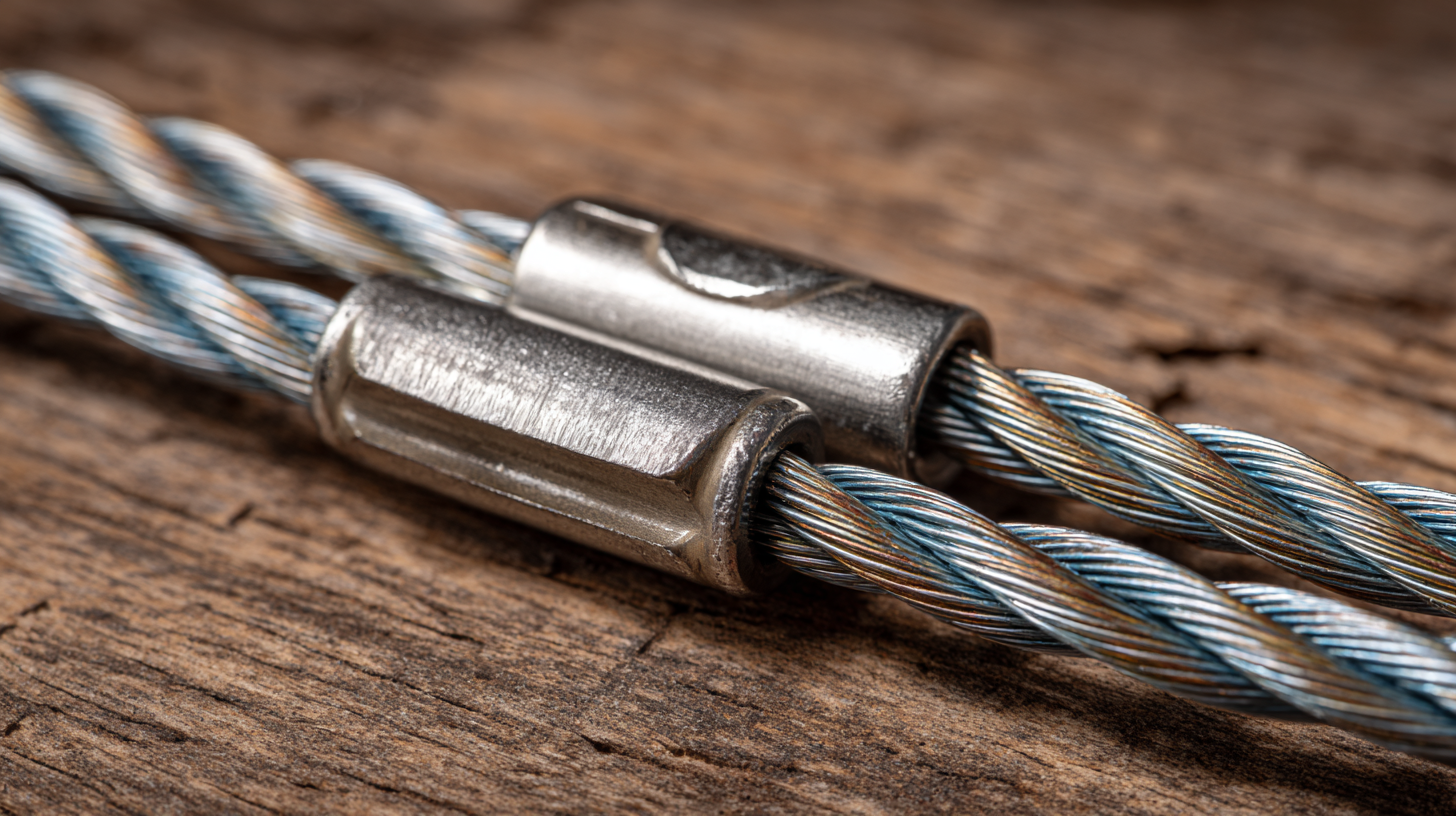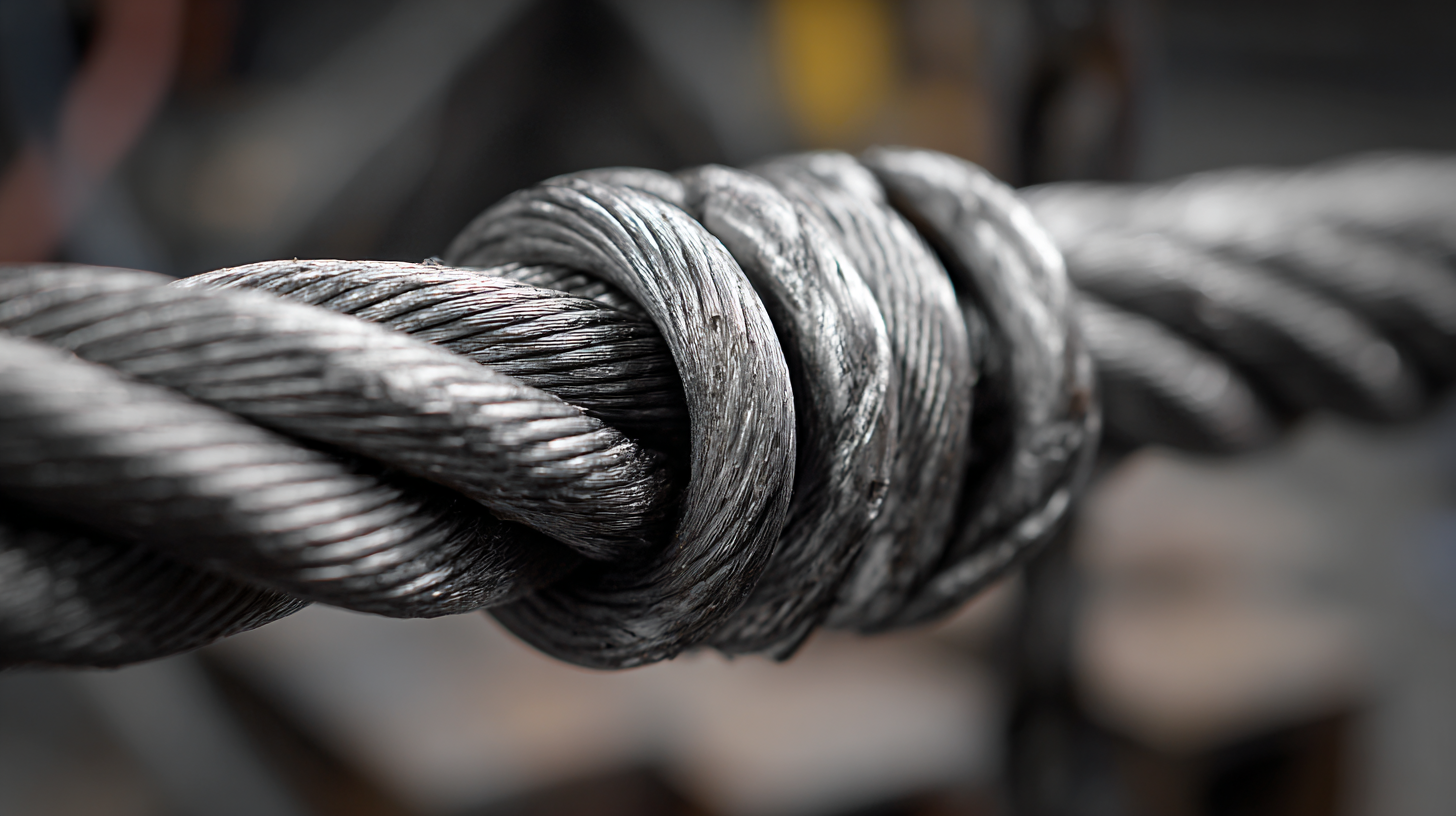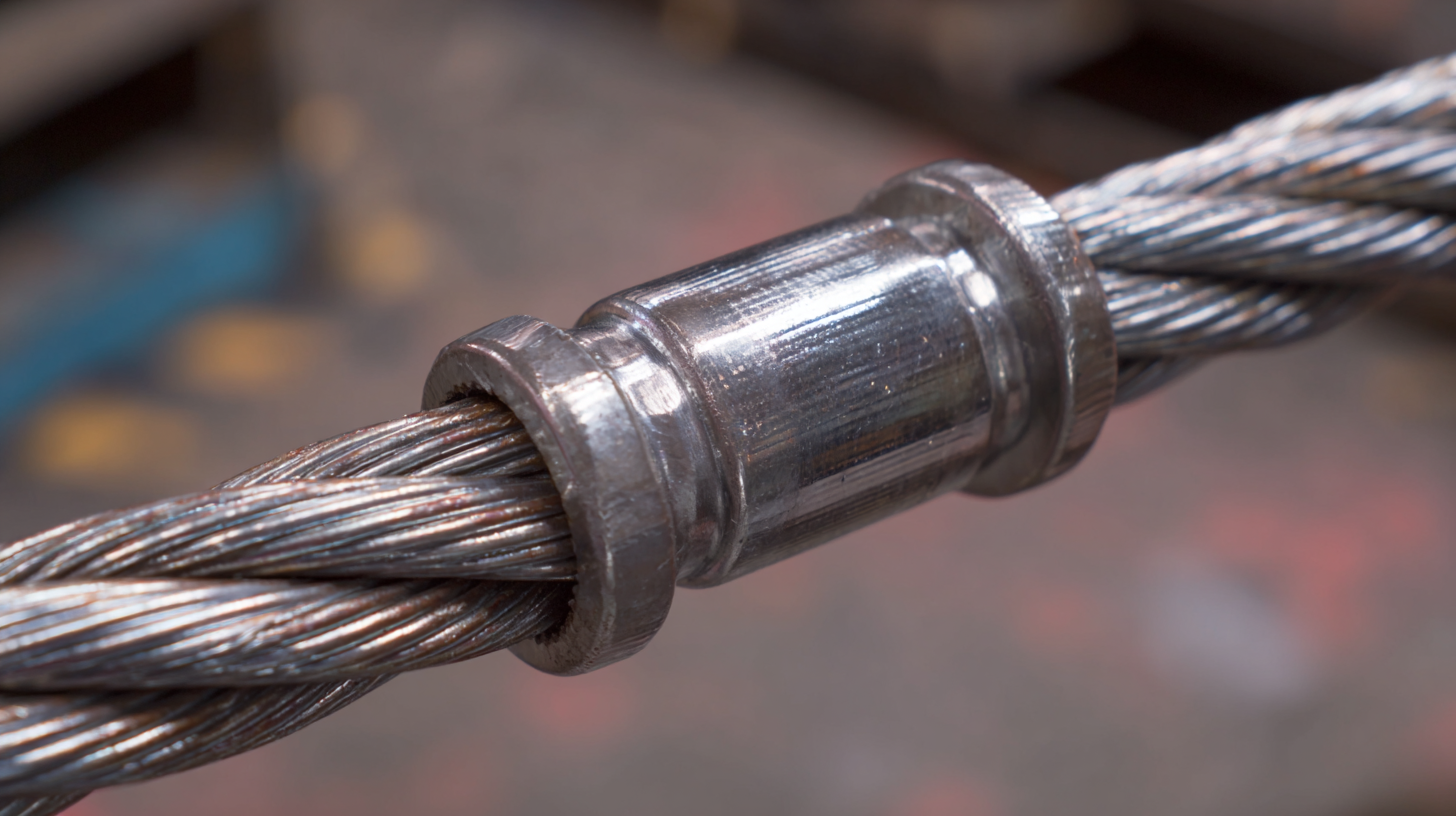In today’s industrial landscape, the selection of the appropriate hardware is crucial for ensuring both safety and efficiency in various applications. Among these critical components, the Wire Rope Turnbuckle stands out as an essential tool for tensioning and adjusting wire ropes in numerous projects, ranging from construction to marine applications. According to a recent industry report by Research and Markets, the global wire rope market is expected to grow significantly, driven by increasing demand in sectors such as construction and shipping. With a rising emphasis on safety regulations and structural integrity, choosing the right Wire Rope Turnbuckle becomes paramount. An ideal turnbuckle not only enhances load management but also improves overall project quality and reliability. This blog will delve into top strategies for selecting the best Wire Rope Turnbuckle tailored to your specific project needs, ensuring you make informed decisions that align with industry standards.

When selecting a wire rope turnbuckle for your project, it is essential to understand the various types available in the market. Turnbuckles are designed to adjust tension and length in wire ropes, and they come in several configurations. The most common types include open-body, closed-body, and swage turnbuckles. Open-body turnbuckles offer ease of installation and flexibility for quick adjustments, making them ideal for temporary setups or applications that require frequent tension changes. On the other hand, closed-body turnbuckles provide a more robust structure, suitable for permanent installations where high tension is necessary.

Additionally, swage turnbuckles are another viable option. These feature a crimping mechanism that secures the wire rope with a cleaner appearance and a more compact design, which is perfect for aesthetic applications. The material of the turnbuckle also plays a crucial role in its performance, with options ranging from stainless steel for corrosion resistance to galvanized steel for added strength and durability. By understanding the different types and materials of wire rope turnbuckles, you can select the one that best fits the specific needs of your project, ensuring optimal performance and safety.
Wire rope turnbuckles are essential tools in various applications where load adjustment and tensioning are crucial. One of the key benefits of using wire rope turnbuckles is their ability to provide precise tensioning. This feature is particularly important in construction, rigging, and marine applications, where maintaining the correct tension on cables can prevent structural failures and ensure safety. The innovative design of turnbuckles allows users to easily tighten or loosen the cable, enabling quick adjustments without the need for additional tools.

Additionally, wire rope turnbuckles enhance the overall durability and longevity of the rigging system. By incorporating a turnbuckle, users can alleviate stress on cables and reduce wear over time. This not only extends the life of the wire rope but also maintains the integrity of the entire system, leading to cost savings in repairs and replacements. Overall, the combination of easy adjustability and increased durability makes wire rope turnbuckles an invaluable component for anyone in need of reliable load adjustment and tensioning solutions.
When selecting the right wire rope turnbuckle for your project, material considerations play a crucial role in ensuring both performance and longevity. Turnbuckles are typically made from various materials, including stainless steel, carbon steel, and plastic. Each material has its own set of properties that can affect strength, corrosion resistance, and overall suitability for your intended application.
For projects exposed to harsh environments, stainless steel is often the best choice due to its excellent corrosion resistance. Consider factors such as the type of load and environmental conditions when making your selection. If the turnbuckle will be used in a heavy load situation, high-strength carbon steel may be appropriate, but be mindful of any potential rusting issues.
**Tips:** Always check the manufacturer's specifications for load ratings and safety factors. It’s beneficial to consult with an expert if you’re unsure which material is best suited for your project. Additionally, consider the compatibility of the turnbuckle with other components of your setup to avoid premature wear and ensure optimal performance. This attention to detail will ensure your selection of a wire rope turnbuckle supports your project's specific goals effectively.
When selecting the best turnbuckle for your specific use case, several factors come into play to ensure optimal performance and safety. First, consider the material of the turnbuckle. Options such as stainless steel, galvanized steel, and aluminum each offer different levels of strength, corrosion resistance, and weight. For outdoor or marine applications, stainless steel is often preferred for its durability against rust and environmental wear, whereas aluminum might be suitable for applications requiring lighter weight.
Another crucial factor is the load capacity and size of the turnbuckle. It's essential to match the turnbuckle's specifications to the load it will bear, taking into account both static and dynamic loads. Oversizing can be wasteful, while undersizing can lead to failures. Additionally, examine the type of threading on the turnbuckle; right hand, left hand, or a combination can significantly affect adjustability and installation. Lastly, consider the design and ease of use, including whether the turnbuckle allows for tool-free adjustments or requires specific equipment, which could streamline your project's efficiency.
This chart illustrates the key factors to consider when selecting a wire rope turnbuckle based on usage scenarios:
Maintaining wire rope turnbuckles is crucial for ensuring their longevity and optimal performance in various applications. According to a report by the Wire Rope Association, regular inspections and proper maintenance can extend the lifespan of these components by up to 40%. One of the primary maintenance tips is to inspect the turnbuckles for signs of wear, corrosion, or fatigue. Any visible damage should prompt immediate replacement to prevent failures during operation. Additionally, lubricating the turnbuckles with appropriate grease can significantly reduce friction and wear, further enhancing their durability.
Another essential aspect of maintenance involves storing wire rope turnbuckles in a dry environment to prevent moisture-related damage. The American Institute of Steel Construction emphasizes the importance of protecting these components from environmental factors that could lead to rust and deterioration. Furthermore, it is advisable to periodically retighten turnbuckles to ensure they remain secure under load. By following these maintenance guidelines, users can avoid costly replacements and ensure the continued efficacy of their wire rope turnbuckles in demanding applications.
